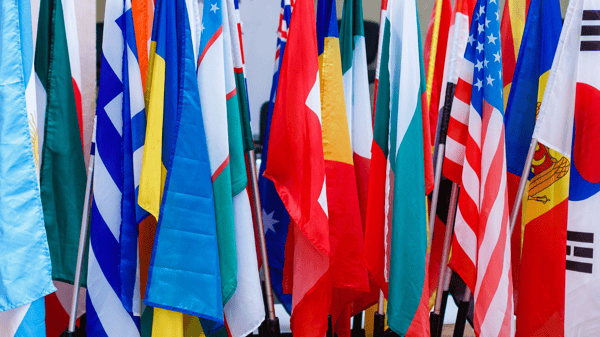Patents are valuable tools that biotechnology startups can use to encourage investment and protect their intellectual property.
The first thing that most people think of when they hear “intellectual property protection” is patents. Especially in the sciences, the prevalence of patents is understandable. The function of a patent is to ensure that an inventor has the right to protect his or her invention from others who would profit from it without permission.
🔬 Related: Intellectual Property for Life Science Companies

Some form of rights given to an inventor have existed since ancient times. In Ancient Greece, there is evidence that the right of an inventor to profit from a unique culinary dish was granted for up to a year. Venetians developed a system to protect intellectual property rights in the 1400s. In response to monarchs granting monopolies to benefit themselves, rather than to promote invention, the English Parliament passed the Statute of Monopolies in 1623. This helped to usher in the Industrial Revolution and laid a foundation for modern patent law.
The first patent law in the United States was introduced in 1790 with the Patent Act. It conferred a protection period of 14 years to patented inventions. The patent had to include a description of the invention. The US Patent Office was established in 1836 to examine patents and see if they were new. Patent law at this time included the ability to patent old components used in new ways and in 1849 the law was extended to require that an invention be non-obvious to other professionals in the same field.
🔬 Read about: A Startup's Guide to Copyrighting, Trademarking, and Patenting
A patent is a right granted by a governing body to an inventor that allows him/her to exclude others from making, selling, or using the invention for a certain amount of time. In the United States, this is 20 years from the date of filing. This means that a person who holds a patent, upon finding out that someone else is selling the same product without permission, may sue them. It does not, however, mean that the US Patent Office or any other branch of the government will step in to prevent others from infringing on the inventor’s patent rights. Enforcement only occurs when the inventor discovers infringement and decides to take action to stop it.
Some commonly misunderstood aspects of patents include the false idea that the invention must have already been built in order to patent it. However, this is not true; a patent application only requires a description of the invention, not evidence that the invention exists. This is important because it is the inventor who files first, not builds first, who gets the rights to the patent. In a competitive field, filing prior to building or testing an invention may sometimes be an important method of ensuring that you are first-to-file.
Another common myth is that trade secrets and patents cannot be used to protect the same invention. While it is true that patents and trade secrets require opposing approaches to secrecy, a patent can be used to protect some aspects of an invention, while a trade secret may protect others. This is a good method to use when the invention includes a not easily patentable piece, such as a software code.
For an early-stage biotech company, it is assumed that either you have or are in the process of securing a patent or license to a patent. This is because, in the absence of a tangible, FDA-approved product, an investor can most easily ascertain the value of a company based in part on their intellectual property. Intellectual property can certainly be held in other formats than a patent, but a patent is a clear description of what a company may freely develop into a product.
Investors frequently want to see a company’s patents as part of the due diligence process. They usually want to know that your company has patented technology prior to entering into due diligence at all. That is how important patents can be for early-stage biotech companies--they are often the key to funding.
Additionally, in a competitive market, a patent provides your company with recourse if a competitor tries to bring a technology to market that infringes on your patent. Most companies will avoid patent infringement if possible, so it is also a preventative measure.
🔬 Learn: How Do Other’s Patents Affect You?

The process to patent an invention can be long and can take a couple of different paths. Here we will discuss both provisional and non-provisional patents.
A provisional patent is a tool that an inventor can use to get an earlier filing date than they might otherwise be able to with a regular, nonprovisional patent. They allow the use of the term, “patent pending” on a product. Provisional patents are filed prior to a non-provisional and do not have as many requirements. They do not have to have a formal patent claim, oath, or declaration. They also don’t require any disclosure of prior information because they are not examined.
Provisional patents have a term of 1 year, within which time a non-provisional patent must be filed or you lose the filing date gained by submitting the provisional patent. The major benefit of the provisional patent is the early filing date, but it is also significantly cheaper to file than a non-provisional one.
🔬Related: Protecting Your IP on a Reduced Budget
Patents are given by the United States Patent and Trademark Office (USPTO). The USPTO lists the rules for who may apply for a patent, what can be patented, and how patent examiners decide whether something is truly patentable.
The USPTO requires that patents be applied for in the name of the inventor, no one else. They define three types of patents: design patents, plant patents, and utility patents. A design patent covers the ornament or appearance of a functional item. A plant patent is exactly what it sounds like--a patent on a newly discovered or invented and asexually reproduced living plant. Utility patents cover inventions that are “useful,” so this is where most biotechnology patents fall. The things that can be patented under the utility patent include processes, machines, articles of manufacture, compositions of matter, and improvements of any of these.
Patents are only given to new, non-obvious, and useful inventions/improvements. These terms have specific legal meanings when it comes to patents. Useful means that the invention is something operable, and its utility would be recognizable to someone in the relevant industry. The application only has to include one potential use, and if it is rejected based on lack of utility the examiner is required to provide an explanation.
The requirement for an invention to be “new” seems obvious, but making sure that the invention really is novel can be challenging. It cannot have been used in the US or described in a printed publication prior to the applicant’s invention of the technology. It also cannot have been patented in another country more than a year before the inventor’s application in the US or have been on sale/in public use in the US for more than a year before the inventor filed the application. Because of these potential ways that an invention might not be novel, it can be quite an undertaking to determine if the invention really is “new” in the eyes of the USPTO. The body of work that came before your invention is referred to as “prior art,” so a prior art search must be conducted before filing a patent application. This search is not technically required in order to submit, but your application will be rejected if your invention is represented in the prior art.
The final requirement is that an invention is “non-obvious.” This is perhaps the most potentially subjective aspect of a patentable invention. The USPTO defines non-obvious as “a sufficient difference from what has been used or described before that a person having ordinary skill in the area of technology related to the invention would not find it obvious to make the change.” It is up to the examiner to decide whether an invention is sufficiently non-obvious, so this area especially can benefit from the advice of a well-qualified patent attorney. The requirement for non-obviousness would not be met, for example, by replacing a component with a one that is used interchangeably in other applications within the same industry. It may, however, be met by replacing a component with one that has never been used in that manner before.
In order to file the patent application itself, it may be done either online through the USPTO’s electronic filing system, or by mailing the application to the Commissioner for Patents. From filing to approval, the process can take between 6 months (for a prioritized examination) and 25 months, with the average being around 22 months.

USPTO patents do not protect inventions anywhere except in the United States. Other countries have their own patent systems, but many are members of the World Intellectual Property Organization (WIPO). WIPO can assist applicants in applying for patents in their 153 member countries through the Patent Cooperation Treaty.
Download The Ultimate Guide to Wet Lab Incubators in Southern California, a handbook to assist life science start-ups through the entire decision-making process to find wet lab space.
Download Now